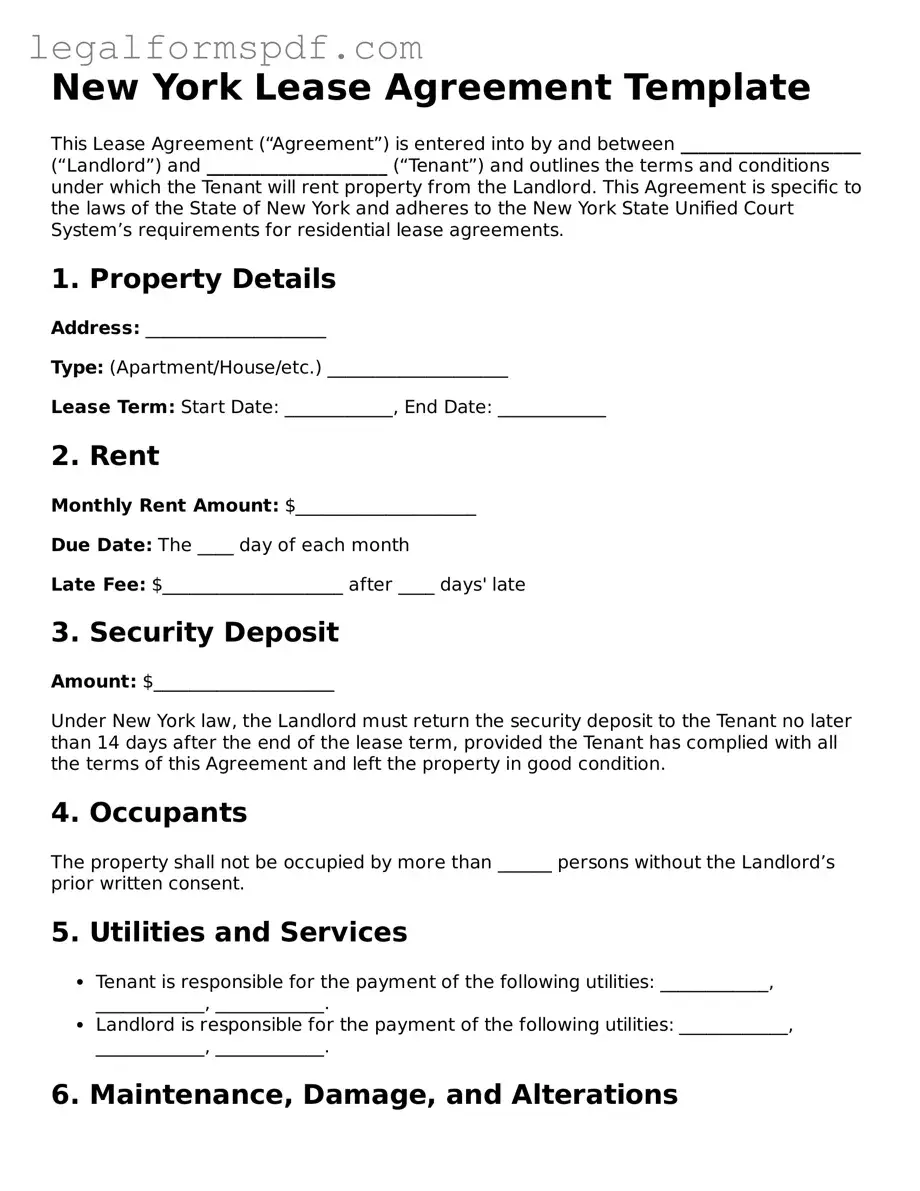New York Lease Agreement Template
This Lease Agreement (“Agreement”) is entered into by and between ____________________ (“Landlord”) and ____________________ (“Tenant”) and outlines the terms and conditions under which the Tenant will rent property from the Landlord. This Agreement is specific to the laws of the State of New York and adheres to the New York State Unified Court System’s requirements for residential lease agreements.
1. Property Details
Address: ____________________
Type: (Apartment/House/etc.) ____________________
Lease Term: Start Date: ____________, End Date: ____________
2. Rent
Monthly Rent Amount: $____________________
Due Date: The ____ day of each month
Late Fee: $____________________ after ____ days' late
3. Security Deposit
Amount: $____________________
Under New York law, the Landlord must return the security deposit to the Tenant no later than 14 days after the end of the lease term, provided the Tenant has complied with all the terms of this Agreement and left the property in good condition.
4. Occupants
The property shall not be occupied by more than ______ persons without the Landlord’s prior written consent.
5. Utilities and Services
- Tenant is responsible for the payment of the following utilities: ____________, ____________, ____________.
- Landlord is responsible for the payment of the following utilities: ____________, ____________, ____________.
6. Maintenance, Damage, and Alterations
Tenant shall keep the leased premises in a clean and well-maintained condition and shall not make any alterations or improvements without the written consent of the Landlord. Tenant is responsible for damages beyond normal wear and tear.
7. Governing Law
This Agreement shall be governed by and construed in accordance with the laws of the State of New York.
8. Entire Agreement
This document represents the entire agreement between the Landlord and Tenant. No verbal agreements or promises will be considered valid or enforceable. Any modifications to this Agreement must be in writing and signed by both parties.
9. Signatures
Landlord Signature: ____________________ Date: ____/____/____
Tenant Signature: ____________________ Date: ____/____/____
